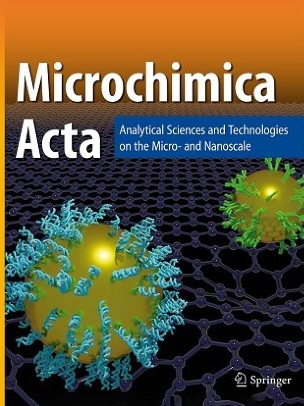Highly sensitive label-free photoelectrochemical aptasensor based on Cu2MoS4@Ti3C2Tx MXene heterojunction for tetracycline detection in milk
Abstract
A label-free photoelectrochemical (PEC) biosensing strategy was constructed based on a Cu2MoS4@Ti3C2Tx MXene heterojunction for the sensitive detection of tetracycline (TC) in milk. The Cu2MoS4@Ti3C2Tx MXene heterojunction substantially facilitates the separation of photogenerated electron–hole pairs, a key element in enhancing the photocurrent response. Cu2MoS4, renowned for its visible-light absorption and photocatalytic properties, is combined synergistically with Ti3C2Tx MXene, contributing a large surface area and outstanding electrical conductivity. The heterojunction not only elevates photocatalytic efficiency but also provides abundant π–π stacking sites on the surface of Ti3C2Tx MXene. These sites enable the direct immobilization of the TC aptamer without chemical modification, thereby minimizing marker interference and improving the detection accuracy. Furthermore, the heterojunction structure broadens the light-absorption spectrum and enhances charge-transfer efficiency, resulting in a higher photocurrent response. The proposed PEC aptasensor demonstrates a favorable linear response to TC within the concentration range 5 to 300 nM, with a detection limit of 1.24 nM. These results are comparable to those achieved by high-performance liquid chromatography. This study is expected to pioneer a novel approach for the design of a label-free PEC aptasensor applicable to the bioanalysis of food samples.
Graphical abstract

 求助内容:
求助内容: 应助结果提醒方式:
应助结果提醒方式:


